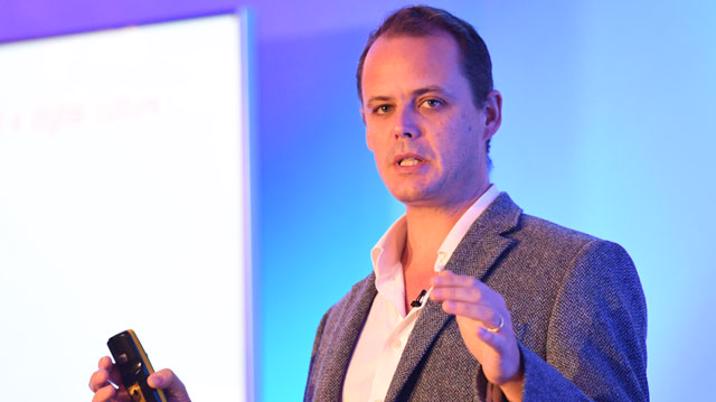
The overarching message coming out of the Customer Direct Conference was that publishers needed to put customers front and centre – the customer should be the focus of everything the company does and that company organisation, content delivery and all marketing communications must be geared towards delivering, in keynote speaker Ashley Friedlein’s words, “customer-centricity”.
Competitive advantage
Customer focus does not come out of touch-feely altruism but from a realisation that it delivers real competitive advantage. The digital transformation of society, with the smartphone at its core, means that delivering a highly personalised and contextualised service is expected by customers, and that, therefore, companies that do it well will prosper over those that don’t.
This trend part explains and part accelerates the changing business models facing publishers. Friedlein pointed to the “decay of the ad-funded model” that has underpinned publishing for so long and the rise of subscription services across the economy as a whole. It’s not now just content providers who do subs – check out the Starbucks Reserve Roastery Subscriptions offer.
“The idea of an ongoing relationship is better than the one-off purchase ad-funded model. It used to be all about eyeballs; it’s now about engagement and life time value”, says Friedlein.
But delivering a customer experience that is seamless across devices, that anticipates customer needs and requirements in a timely fashion and constantly surprises and delights them, is challenging.
Easier said than done
Some publishers are getting the message. The Guardian’s Anne Gowan described her company’s journey away from a reliance on digital advertising and towards a recurring revenue model. Their aspiration is, says Anne, to deliver “best practice user journeys which focus on all stages of the interaction”. The key word there was probably ‘aspiration’.
With few exceptions, most companies – and not just publishers – are struggling with it. According to recent research from Econsultancy, says Ashley, “the majority of companies see themselves as ‘beginners’ and there are lots of gaps.” Most companies suffer from a silo culture, tech bottlenecks and poorly integrated marketing communications. As for who’s in charge of the ‘customer’ journey, no one seems to know!
The traditional company structure that most of us labour under, is not conducive to organisation-wide customer focus. According to Ashley’s research, “organisations are structured around control mechanisms and reporting, not around capabilities and outcomes”.
What should publishers do
But we’re not blind to our faults. Jim Bilton’s ‘Subscription Futures’ research showed that 70% of publishers are either currently restructuring themselves, or are planning to do so.
Publishers need to crack on and accelerate the process. The future is going to require joined up data and systems, consistent user experiences across devices and for those experiences to be personalised, contextualised and proactive.
Creating a non-hierarchical, non-siloed structure where data and learnings get shared across the organisation, where content, communications and commerce are all delivered in a seamless and integrated way is where we need to get to, and time is not on our side.
Publishers need to get their staff to look outwards not inwards. Jim Bilton came up with a scary statistic, that 22% of subscription teams’ work is spent on internal admin – reporting, budgeting and forecasting! We’ve simply got to snap out of it and redirect our efforts to where it can make the most difference.
Ashley pointed to a growing trend for companies to appoint ‘chief customer officers’ with significant power and responsibility. Dow Jones’ Katie Vanneck-Smith is one example. Dennis Publishing’s Abi Spooner revealed at the conference that they were looking to appoint someone in the company whose job it was to champion the customer, and she expected this to revitalise what they’re doing.
Structure is important, tech is very important but culture is critical too and companies don’t have to wait for structure and tech to be right before making changes. The use of personas (pin them to the fridge, hang them on the wall) can help staff better visualise the customer and anticipate their needs. A company culture that constantly questions how things are done and how things can be done better need not wait for a restructure.
The tech side of delivering fully integrated customer communications will require IT investment but there is ample opportunity to make significant improvements to the customer experience with the tech you already have.
Big improvements on a shoestring
Significant improvements to the bottom line through instilling a customer-first culture to the customer service department can be made without reinventing the tech wheel and this results in improved business performance.
Hearst’s Seema Kumari talked us through a recent ‘back to basics’ project the company ran with its customer service team, prompted in the first instance by an awareness of the very large number of calls the team was receiving. The project resulted in significantly higher renewal rates and lower call volumes, meaning increased revenue and lower costs.
Hello Fresh’s Freddy Ward, a provider of recipes and ingredients on subscription, spoke about the need to drive customer engagement, especially in the crucial first two weeks of a new subscription, when anxiety levels are at their highest.
Listening to Seema and Freddie, it was obvious that anticipating and addressing potential customer anxieties on the part of a new subscriber, pays dividends.
* Customer anxiety # 1: was that such a good idea?
New customers need almost instant affirmation that their decision to fork out for a twelve month subscription was a great choice and reassurance that it wasn’t a stupid one. You need to be in touch with them immediately, celebrating their decision, exciting them about the relationship ahead and reassuring them that all the things they are expecting to happen, will!
* Customer anxiety # 2: when will I get my first issue / free gift?
Seema’s research indicated that this was a huge concern, and one easily addressed, through timely and clear email communications. As part of the review process, the Hearst team identified a number of areas of confusion, which were causing unnecessary anxiety. The term ‘on sale’, for instance, is meaningless to the average subscriber, who simply wants to know when their first issue will actually drop through their letterbox. Similarly, consumer publishers’ habit of cover dating months in advance is not understood by most customers, so care needs to be taken with the messaging. Emailing a subscriber who purchased their subscription in early February that the first issue they will receive will be the ‘April issue’ is a huge own-goal.
* Customer anxiety # 3: what if I change my mind?
Jim Bilton alluded to the fact that most publishers are extremely reluctant to give refunds. This niggardliness is counter-productive. Allowing customers to cancel at any time, and being transparent about the process, breaks down barriers and builds trust. It also, said conference moderator Julian Thorne, increases the chances of that individual re-subscribing in the future. Hearst’s new policy is to allow cancellations at any time. But publishers shouldn’t take cancellations lying down. A proactive cancellations strategy is needed. Hello Fresh has a dedicated ‘saves’ team, trained to handle cancellation requests. Not only do they manage to dissuade 20% of them (“they’re not always looking for a refund, sometimes they’re just looking for an apology”, Freddy tells us), but valuable information can be obtained and fed back to the product teams.
Other common niggles include frustration with getting a satisfactory response after a call to customer services, lack of information and control; problems which Hearst addressed by empowering the customer service team to take a number of decisions (eg. fast tracking a gift despatch) which they previously had had to refer upwards, updating and improving the FAQs page on the website and improving the ‘self-service’ functionality.
By reviewing all aspects of the communications programme, by adopting a customer’s eye view of the process (taking out a sub to your own title can be eye-opening!) and by shadowing customer service agents to see the friction points first-hand has produced great results for Hearst: higher renewals, fewer customer service calls and better marketing information through the rationalisation of the ‘call reason’ codes the agents used to code up each call – which pre-project, stood at 150!
Of course, being customer-centric is more than getting the onboarding period right. As Julian said, publishers should be continually looking to surprise and delight customers with fresh content, social media interaction, special offers and regular communication throughout the subscription lifetime.
Another aspect of customer-centricity is choice…
Give them real choice
To paraphrase a famous car manufacturer of the twenties, a typical publisher’s subscription offer is: you can subscribe to our content for as long as you like, as long as it’s a year.
In the digital age, said The Browser’s Robert Cottrell, that’s no longer tenable. In print, the minimum viable product is an edition, but in digital, it’s surely an article and content atomisation will really take off in the next couple of years, he thinks, given recent improvements in micro-payment handling. Robert expressed some exasperation with publishers insisting on twelve month subscriptions, comparing them to a coffee shop owner refusing to sell a customer a mug of coffee, insisting instead on them buying a year’s supply.
Cottrell has considered the issue of single article sales in some depth. For it to work, there are three basic rules – the content has to be worth paying for, the price has to be right and the transaction has to be frictionless. In his experience, people were insensitive to price (up to 99p), insensitive to article length and, perhaps surprisingly, topic. What they really cared about was the author!
Delegates also heard from Depesh Mandalia of Toucan Box, a supplier of children’s activity toys, who said that while a regular subscription was their preferred offering, they had an online shop for single purchases and they allowed subscribers to take subscription “holidays”, putting deliveries on hold until they were ready to restart. The lesson was that as much control should be given to the customer as possible, without us erecting artificial and arbitrary barriers.
Let the tech take the strain
Anticipating every customer twist and turn is time and labour intensive, and, said several speakers, publishers should be relying more on automation. Artificial intelligence and machine learning are already here and increasingly affordable – publishers should be using it to work smarter, said consultant Mark Brill. Increases in computing power mean that billions of data items can be stored and processed so that appropriate messages and offers can be served in real time, based on machine learnings, to your customers in response to what they’re actually doing on your site.
And, finally, talking of tech, if I had a pound for every time I heard someone say that the future is going to be a lot more complicated than the present, I would be a rich man. Sure enough, Ashley concluded his keynote, by saying “we’ve only just begun!” If you think things are complicated now, just you wait; machine learning, AR, AI, VR, messaging, wearables, 3D printing et al. None of it necessarily new, but likely to play an increasingly important part in all our futures. Gulp, I think he might be right.












